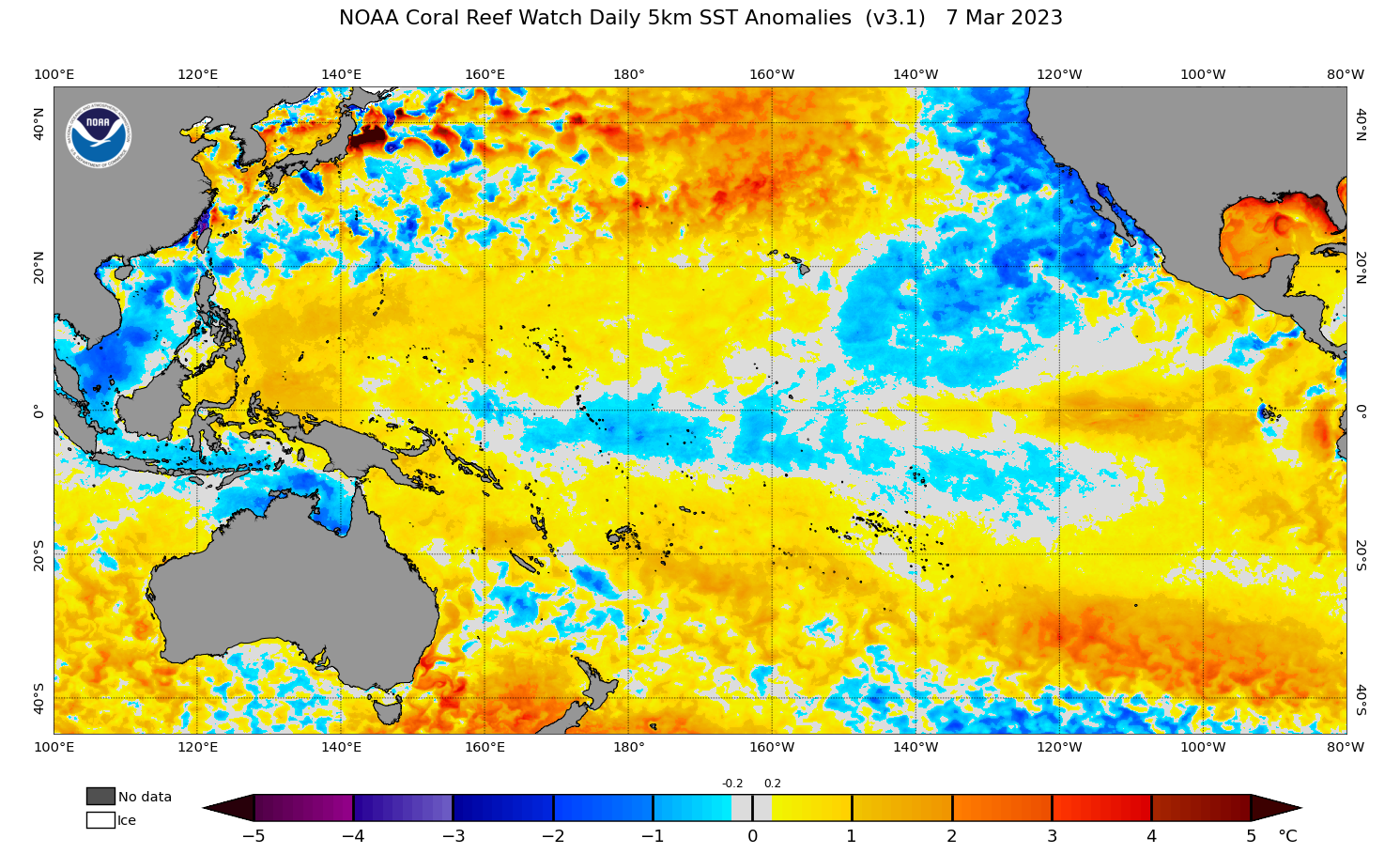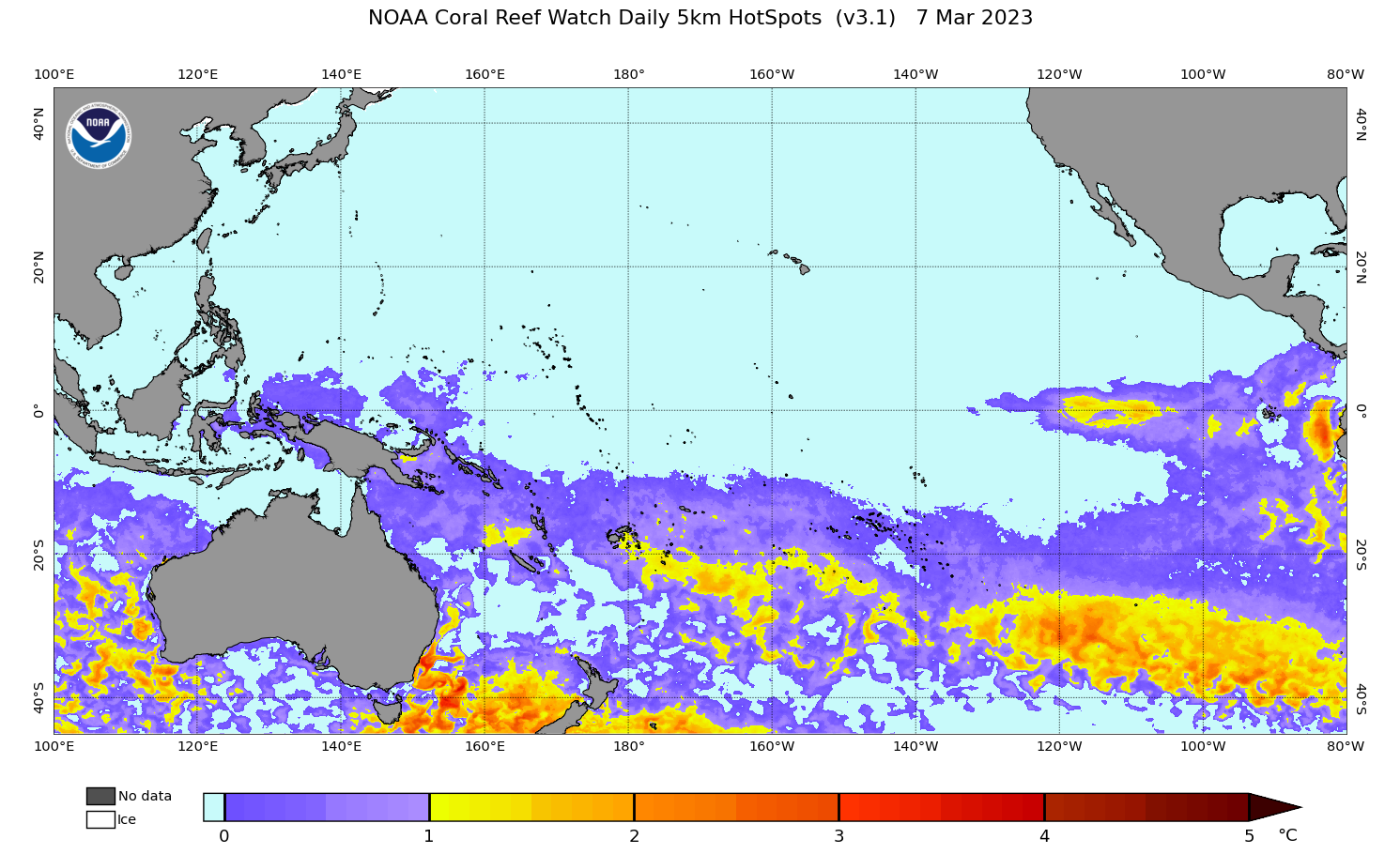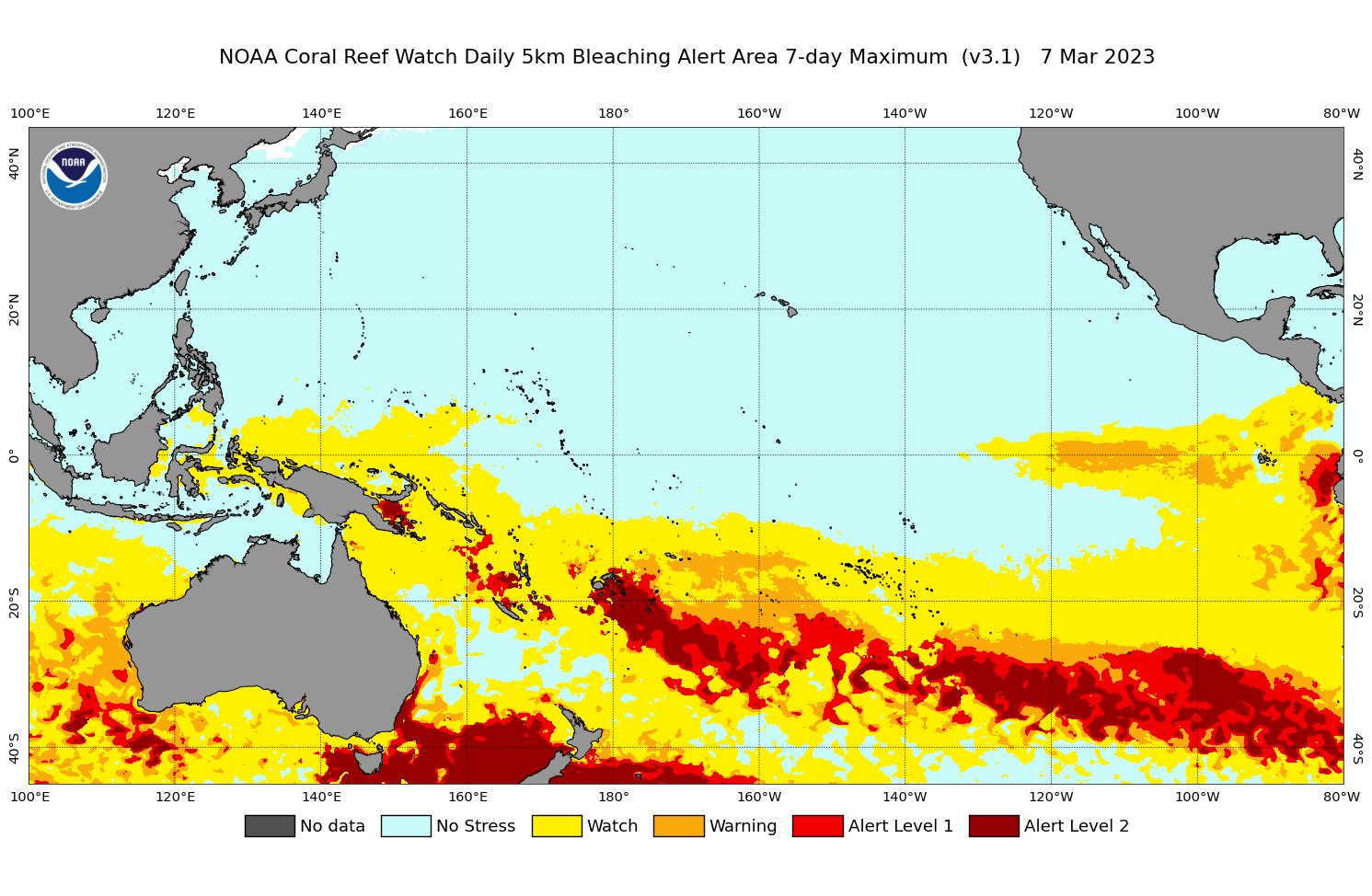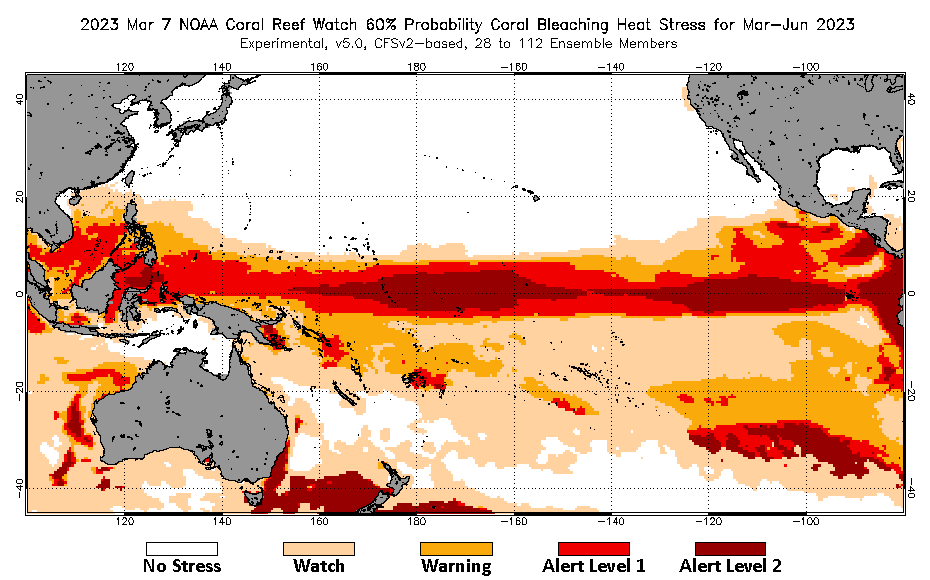Coral Bleaching Heat Stress Analysis and
Seasonal Guidance through June 2023
(Released March 8, 2023)
Current conditions:
NOAA Coral Reef Watch's (CRW) near real-time satellite monitoring shows that as of March 7, 2023, below-average sea surface temperatures (SSTs) are weakening across the equatorial Pacific Ocean; the magnitude of negative SST anomalies is decreasing across most of the central equatorial Pacific; and positive SST anomalies continue to increase in the eastern equatorial Pacific, as the La Niña begins to give way to El Niño-Southern Oscillation (ENSO)-neutral conditions (Figure 1). SST anomalies remain above average in areas of the southern Pacific, including Papua New Guinea (PNG), the Solomon Islands, Vanuatu, New Caledonia, Fiji, and the Austral Islands. Above-average SSTs (as much as 2 °C above normal) also persisted around the Northwestern Hawaiian Islands (NWHI) from December 2022 to the end of February 2023. In the western Pacific, SSTs are only slightly above average (~1 °C or less) around Guam and the Federated States of Micronesia. As of February 9, 2023, the NOAA National Centers for Environmental Prediction's (NCEP) ENSO Alert System status remains at La Niña Advisory. ENSO-neutral conditions are expected to begin within the next few months and persist through Northern Hemisphere spring and early summer.

|
||
|
Figure 1. NOAA Coral Reef Watch's Satellite Sea Surface Temperature (SST) Anomaly product for the Pacific region. |
||
Over the past three months, Coral Bleaching HotSpots >1 °C have been present in the southern hemisphere, stretching from PNG southeasterly to the Austral Islands and Easter Island, Chile. (Figure 2). Starting in February 2023, NOAA CRW's 5km satellite Regional Virtual Stations for Eastern New Caledonia, Vanuatu, and Fiji reached Bleaching Alert Level 2 (Figure 3). At the same time, CRW received reports of coral bleaching across multiple sites in Fiji. Mass bleaching was reported in the Savusavu area, where in-water temperatures measured as high as 33 °C at the surface over the inner reefs, and as high as 30 °C down to 20m. Partners in Fiji also reported mass bleaching in Vanuatu. Additionally, during the past three months, CRW's Regional Virtual Stations for PNG, Southern Tonga, and the Austral Islands reached Alert Level 2. We welcome in-water observations from partners and users in these regions, to clarify what has been/is being observed on local reefs.

|
||
|
Figure 2. NOAA Coral Reef Watch's Satellite Coral Bleaching HotSpot product for the Pacific region. |
||

|
||
|
Figure 3. NOAA Coral Reef Watch's Satellite Bleaching Alert Area (7-day maximum) product for the Pacific region. |
||
CRW's most recent, modeled Four-Month Coral Bleaching Outlook (Figure 4) projects heat stress will end around Fiji, Vanuatu, and New Caledonia by the end of May 2023, as the Northern Hemisphere approaches summer. Alert Level 2 stress is predicted to reach the central equatorial Pacific around the Gilbert Islands, Kiribati, Howland and Baker Islands, and the Northern Line Islands by June 2023.

|
||
|
Figure 4. NOAA Coral Reef Watch's Four-Month Coral Bleaching Outlook of March 7, 2023, for the period March-June 2023, for the Pacific region. |
||
***NOTE: We recommend that users continue to monitor updates in the Four-Month Outlook predictions (https://coralreefwatch.noaa.gov/satellite/bleachingoutlook_cfs/index.php), for their regions of interest/concern, over the months ahead, along with the changes in coral bleaching heat stress detected by our near real-time satellite products (https://coralreefwatch.noaa.gov/product/5km/index.php).***
CRW's current satellite and modeled products can be found at:
https://coralreefwatch.noaa.gov/index.php
CRW's modeled Four-Month Coral Bleaching Heat Stress Outlooks can be found at:
https://coralreefwatch.noaa.gov/satellite/bleachingoutlook_cfs/outlook_cfs.php
CRW's 5km satellite Regional Virtual Stations can be found at:
https://coralreefwatch.noaa.gov/product/vs/map.php
Sign up for automated bleaching alert emails for CRW's 5km Regional Virtual Stations at:
https://coralreefwatch.noaa.gov/subscriptions/vs.php
Please report bleaching events (or non-events) at:
https://coralreefwatch.noaa.gov/satellite/research/coral_bleaching_report.php
Disclaimer
The content posted on this web page solely represents the opinions of the authors and does not constitute a statement of policy, decision, or position on behalf of NOAA or the US Government.
The appearance of external links on this World Wide Web site does not constitute endorsement by the Department of Commerce/National Oceanic and Atmospheric Administration of external Web sites or the information, products or services contained therein. For other than authorized activities, the Department of Commerce/NOAA does not exercise any editorial control over the information you may find at these locations. These links are provided consistent with the stated purpose of this Department of Commerce/NOAA Web site.